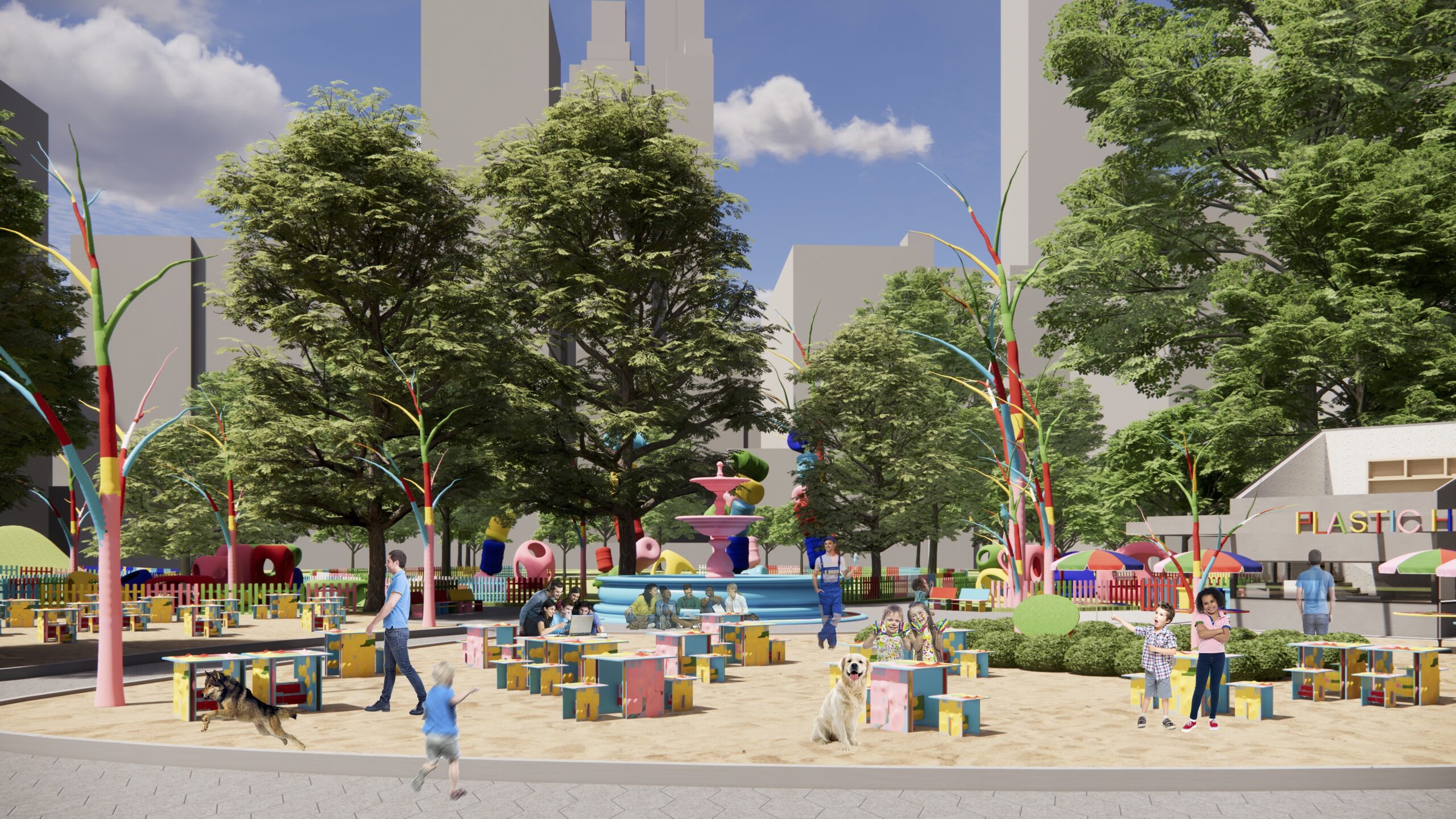What if some of the recent thesis projects by Pratt students were brought to life on a citywide scale? From transportation to culture, buildings, and parks, many Pratt students have proposed novel ideas that could power the future of New York City and beyond. Explore 19 of these exciting project concepts—compiled into an imagined city guide—below.
Get Around

The subway is one of the best ways to navigate the five boroughs of New York City. With Screen on Wheels, designed by Zion Yang, BFA Interior Design ’24, you could have an immersive experience while commuting. Inspired by cinematic exhibitions, this project would install digital displays in subway cars, so you could be entertained en route to your next destination.
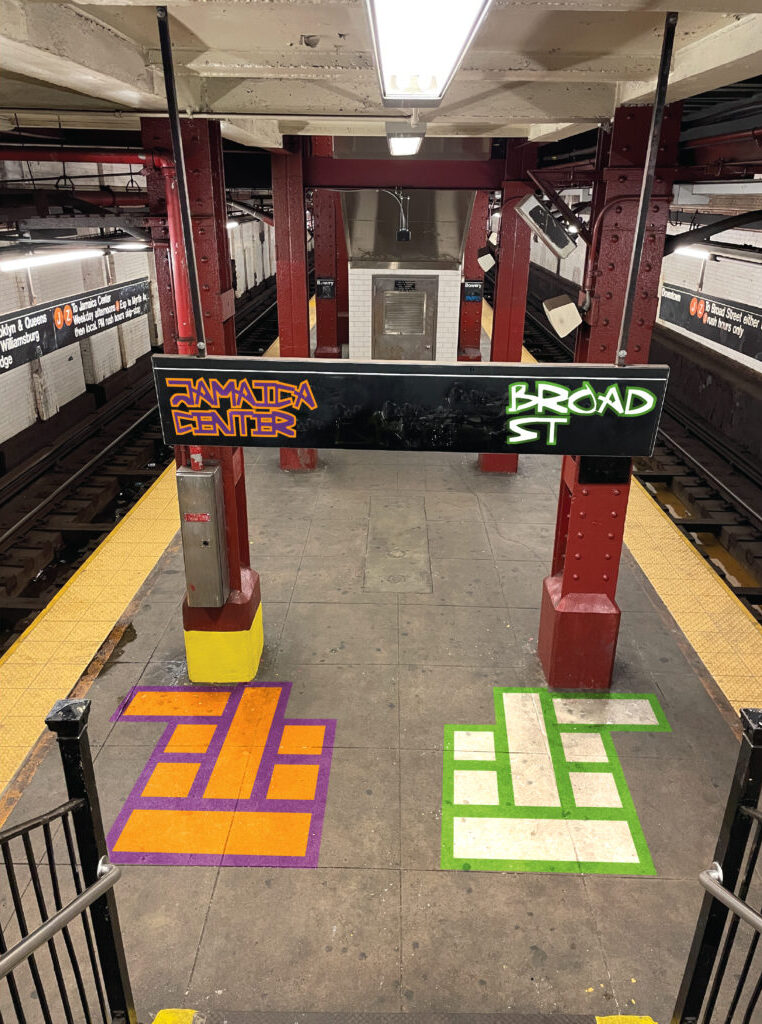
While traversing the city, you might see this unique new train signage, which takes its inspiration from graffiti forms. The wayfinding designs in the Graff Standards Manual by Kyle Howard, BFA Communications Design ’24, would transform the New York City Transit Authority’s brand identity, incorporating letterforms that take their cues from street art.
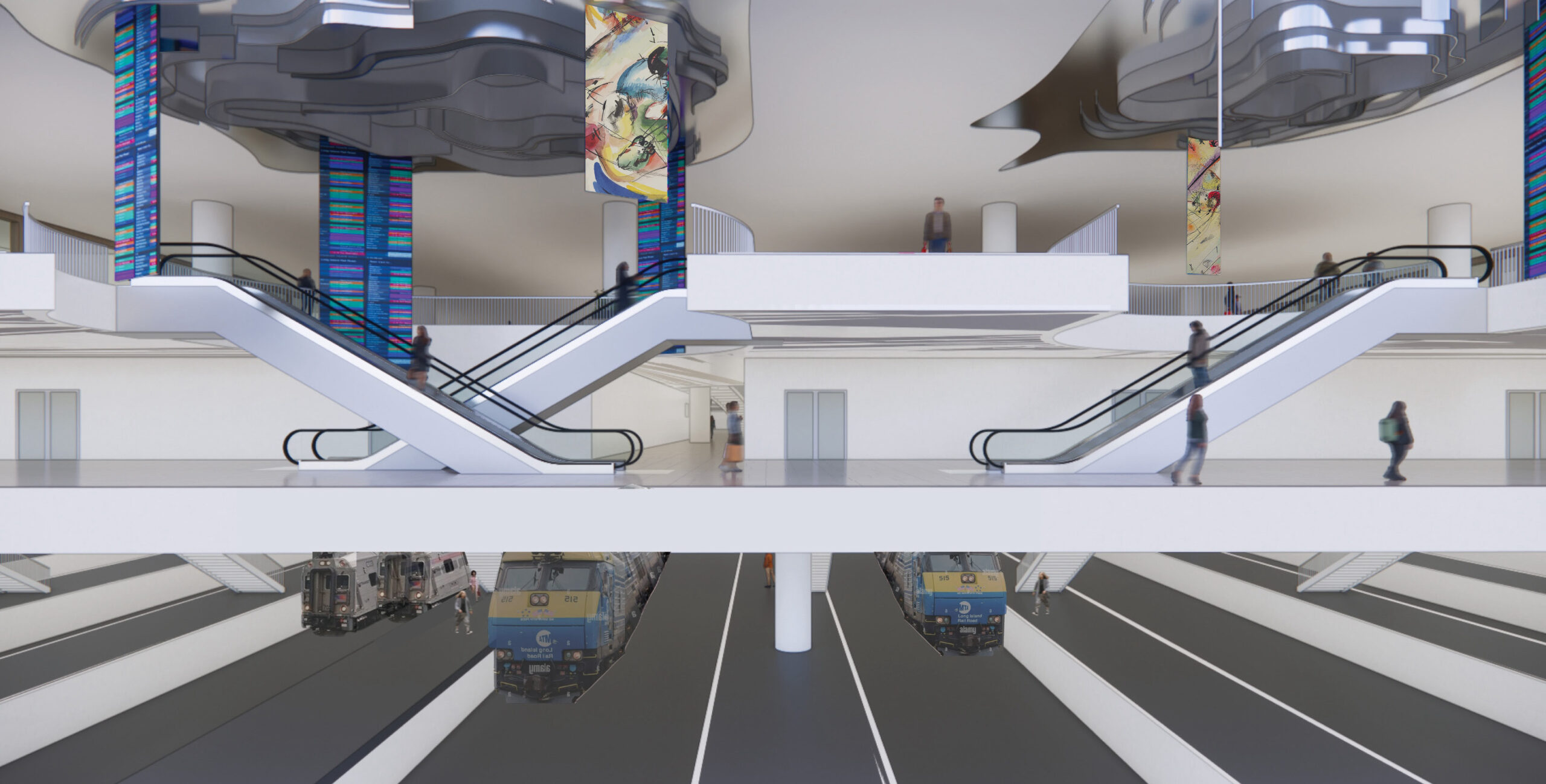
Swing through Penn Station and you would be able to experience the smooth, grand redesign of this major transportation hub. Using strategic transparency and innovative lighting to create a sense of seamlessness, Transit Nexus by Makenna Lucey, BFA Interior Design ’24, would elevate the subterranean space into a destination in and of itself.
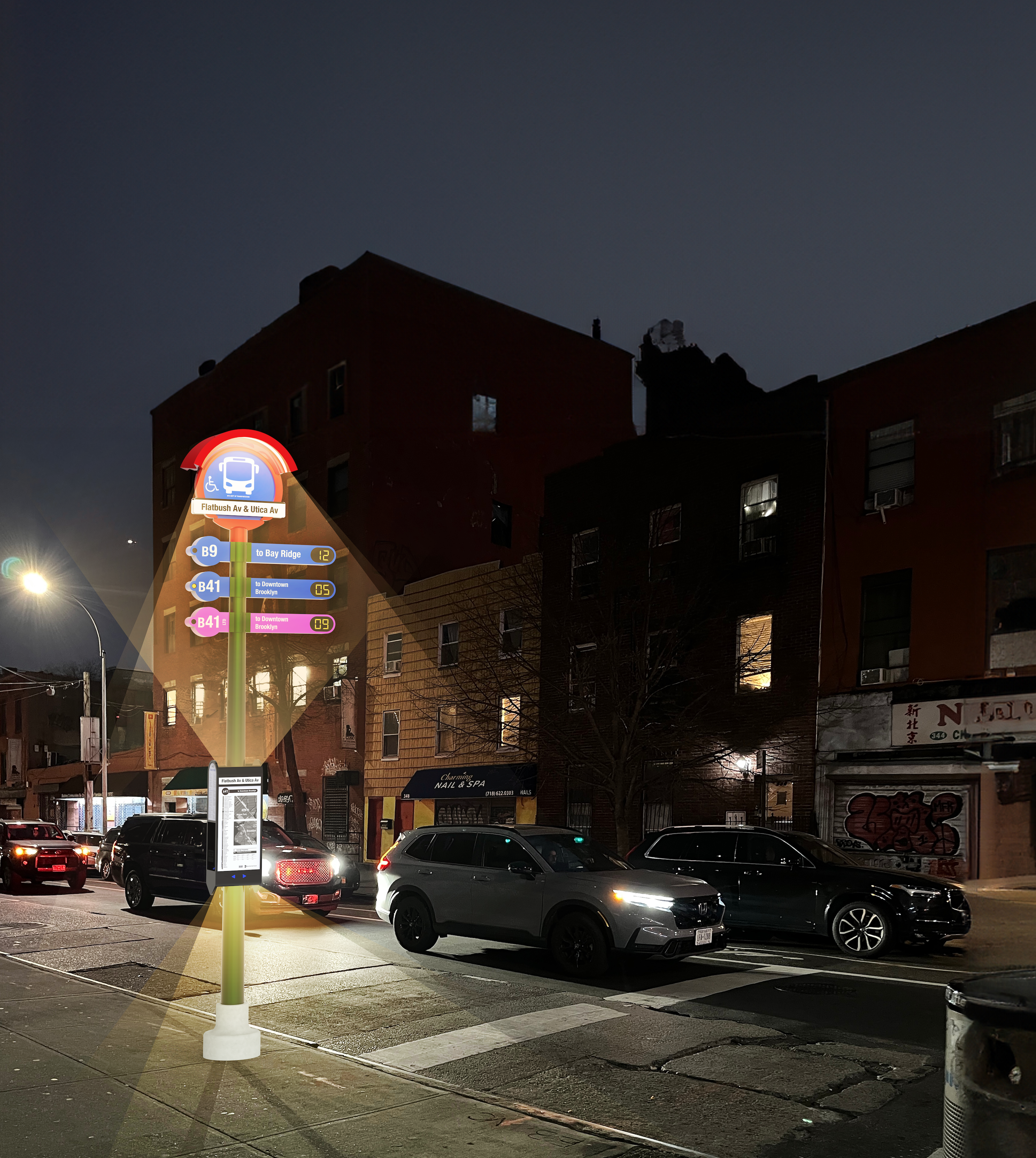
If you wanted to stay above ground, you could simply look for one of New York City’s new SmartStop bus poles, designed by Joanne Wu, BID ’24. With improved wayfinding and integrated lighting, you would be able to safely wait for the bus at any time of day.
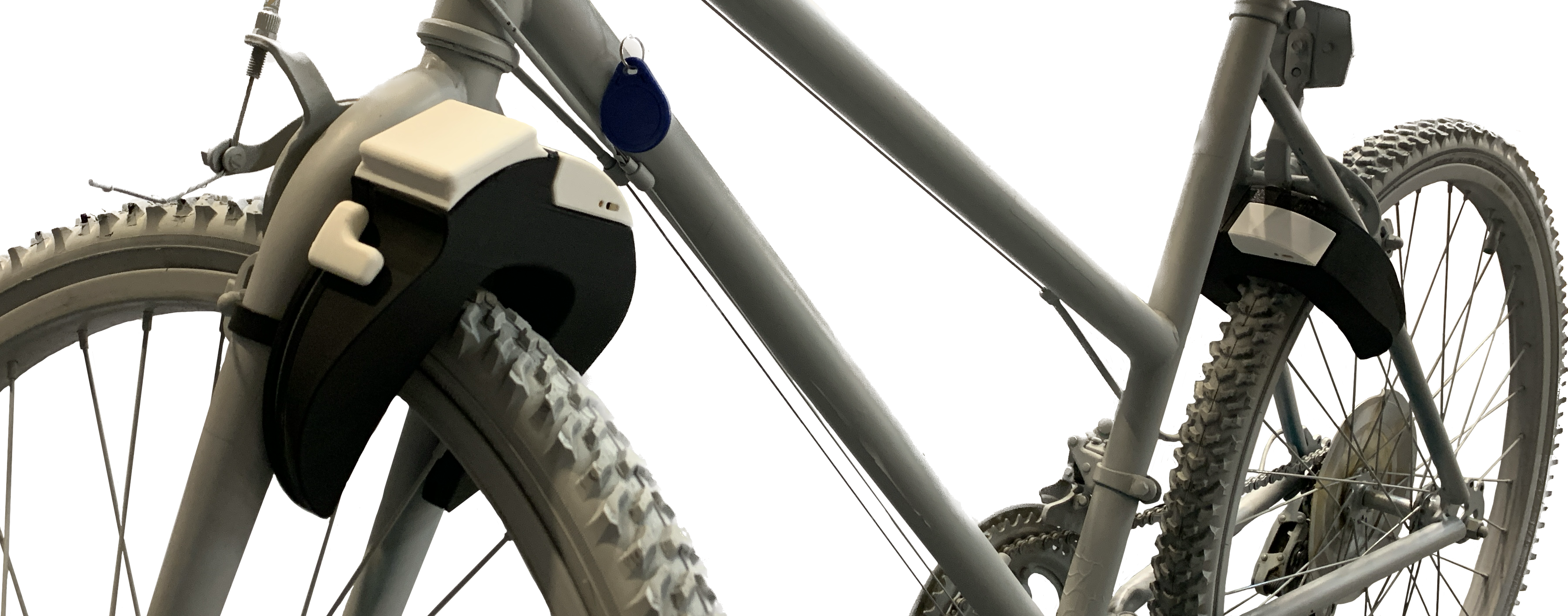
For those who prefer to travel by bike, packing a Smart Bike Wheels Secure System by Shuhao Xuanyuan, BID ’24, would be a must. This additional locking system was designed to maximize the security of bike wheels, so they can’t be stolen if locked up on the street.
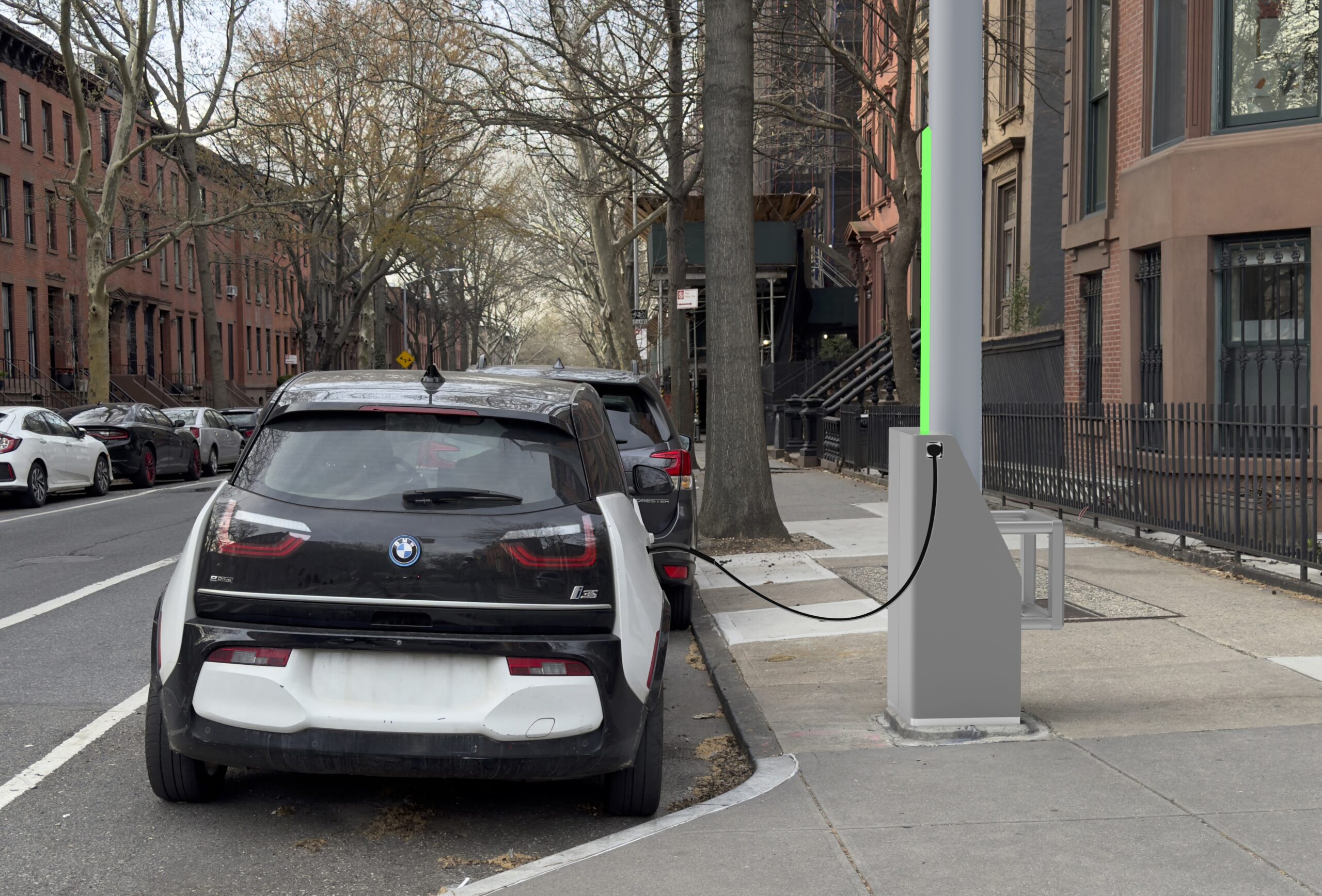
And if you’d rather opt for an e-bike or electric car, you could park at any convenient Urban-E charging station to refuel. By converting existing street lights into functional charging locations, this innovation by Brooks Butler, BID ’24, would make sustainable curbside charging a breeze.
Learn and Explore Culture
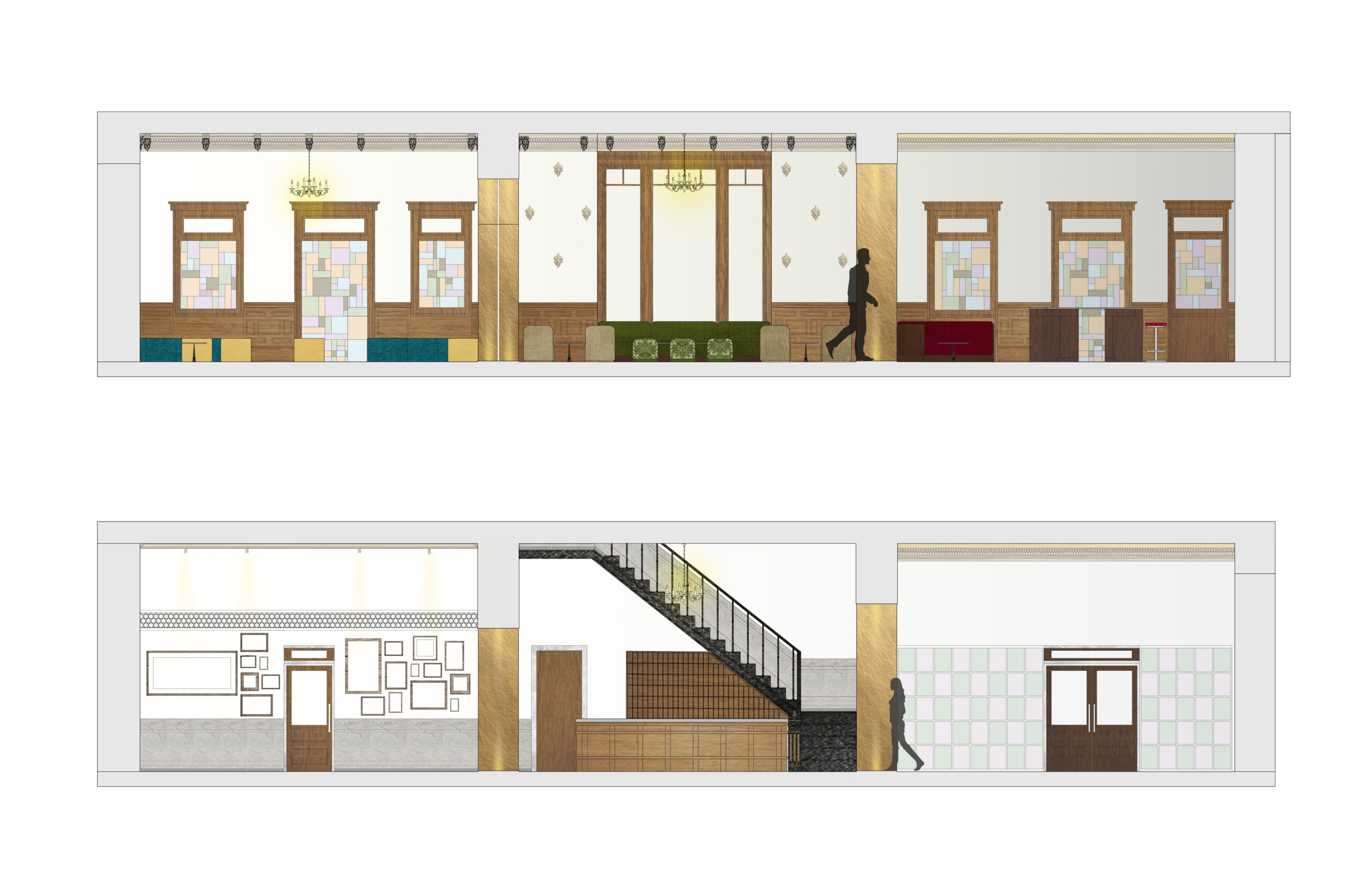
Soo Yoon Chung, MFA Interior Design ’24 has proposed renovations of the Chelsea Hotel Lobby for a more thoughtful narrative experience. Chung’s analysis of the historic and renovated structures of the hotel lobby suggests a preservation approach for the space, while facilitating a compelling and memorable journey for each visitor.
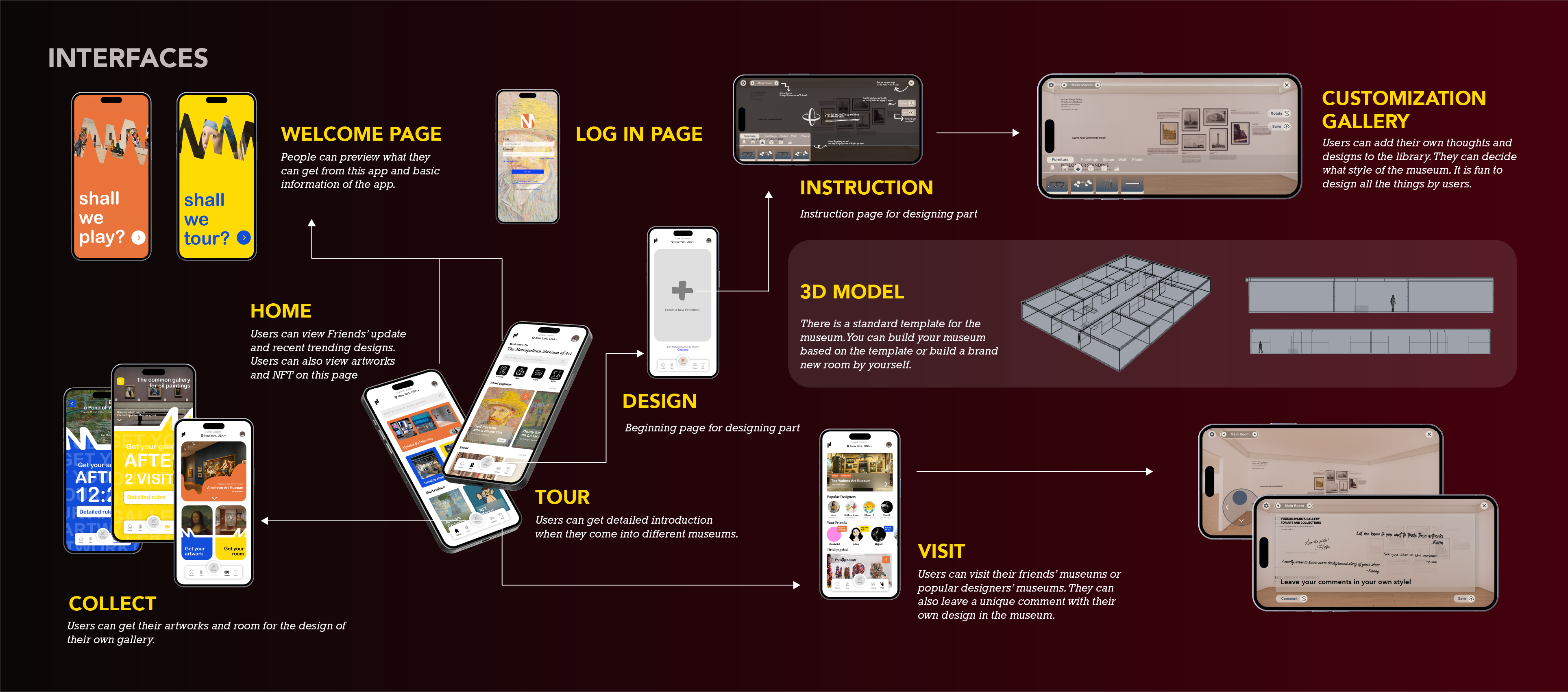
If you couldn’t make it to NYC, but still wanted to experience its exceptional art scene, you could simply download the virtual art gallery app Musée by Yuxuan Wang, BFA Communications Design ’24, and explore any of New York’s world-class galleries and museums from the comfort of your home. Using AR and VR technology, you could collect and share artwork with friends online. Or, you could curate your own digital show, choosing to display works from New York’s Metropolitan Museum of Art and other renowned city museums.
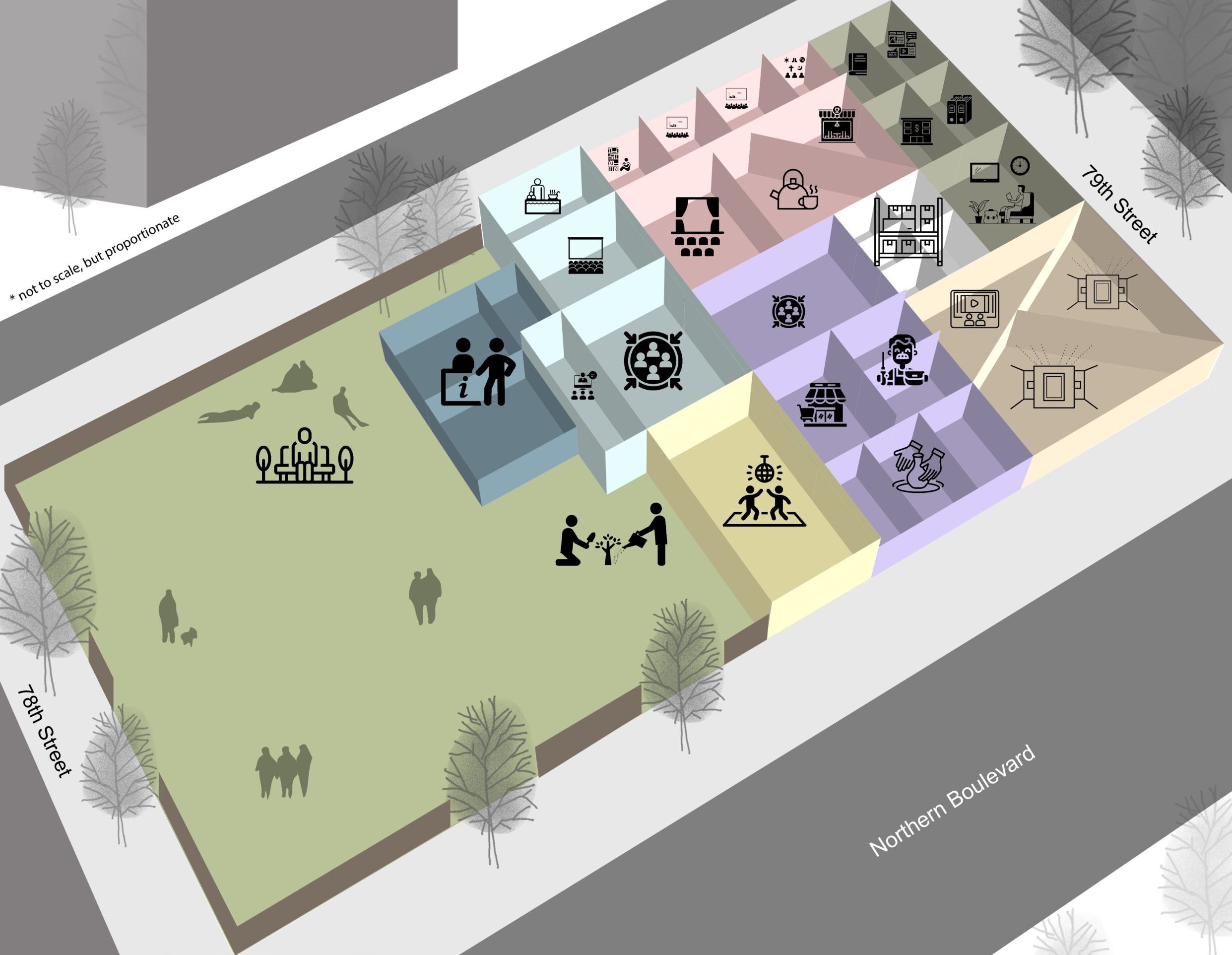
In Jackson Heights, Queens, Riya Khanapure, MS Urban and Community Planning ‘24, has designed “Swagat,” a multicultural hub that aims to foster community cohesion and celebrate the cultural diversity of the South Asian—and specifically Indian—diaspora. The new site, proposed in Khanapure’s project, Cultural Kaleidoscope, would address many of the neighborhood’s socio-cultural challenges through a range of community offerings, such as craft workshops in sari weaving and pottery, a commercial kitchen, and a tea room, as well as events ranging from cultural festivals to art exhibitions and community gardening.
Rest and Reflect
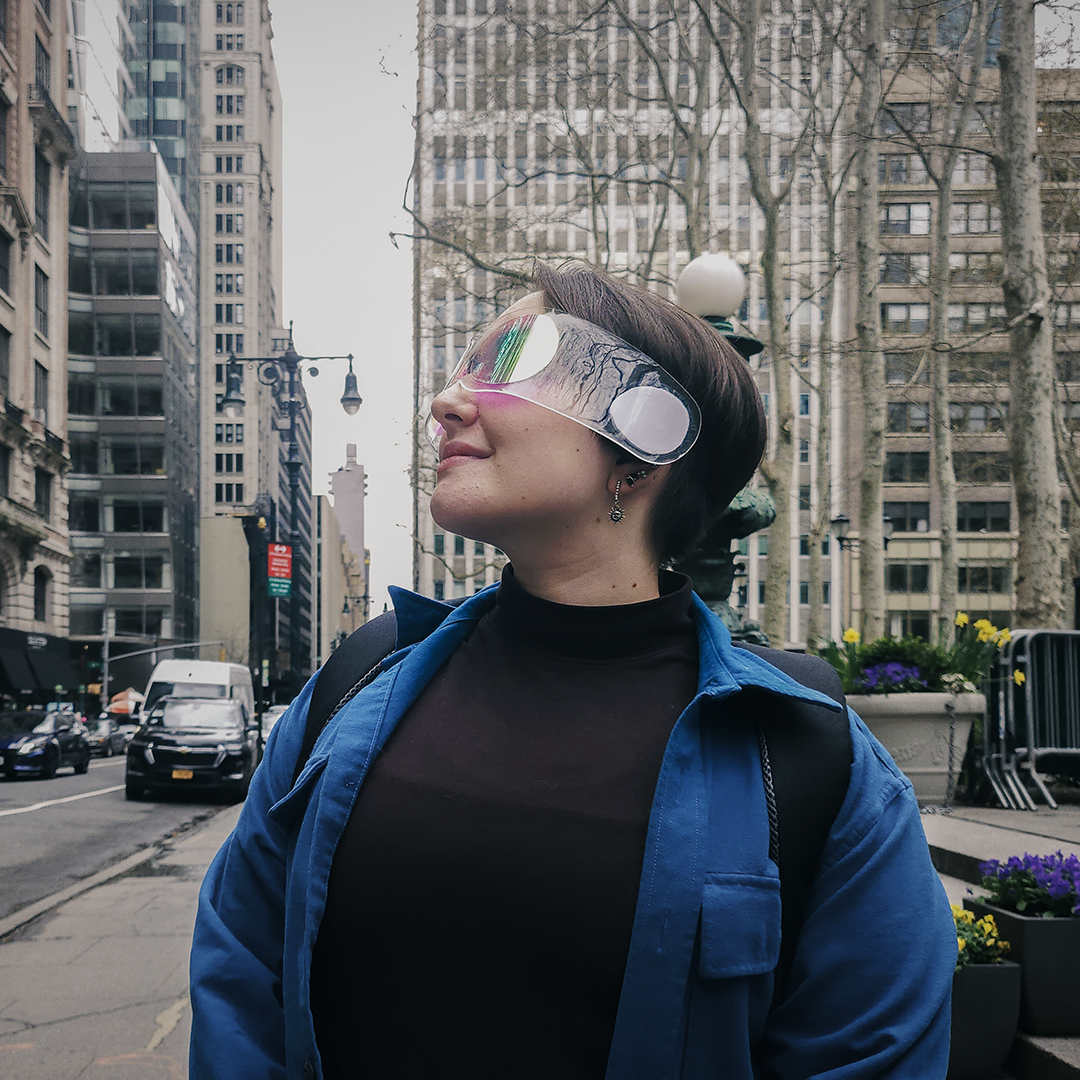
Between the noise, the sights, and the smells of New York, the city can be a lot for your senses. With Spectrum by Shutian (Shirley) Ye, MID ’24, you could face the overwhelming environment with ease. This wearable device would provide support for people with high sensitivity to light and sound. The headset would feature “cat ears” that could turn into tinted glasses, and cyberpunk-inspired protective wear that would add another layer of defense.
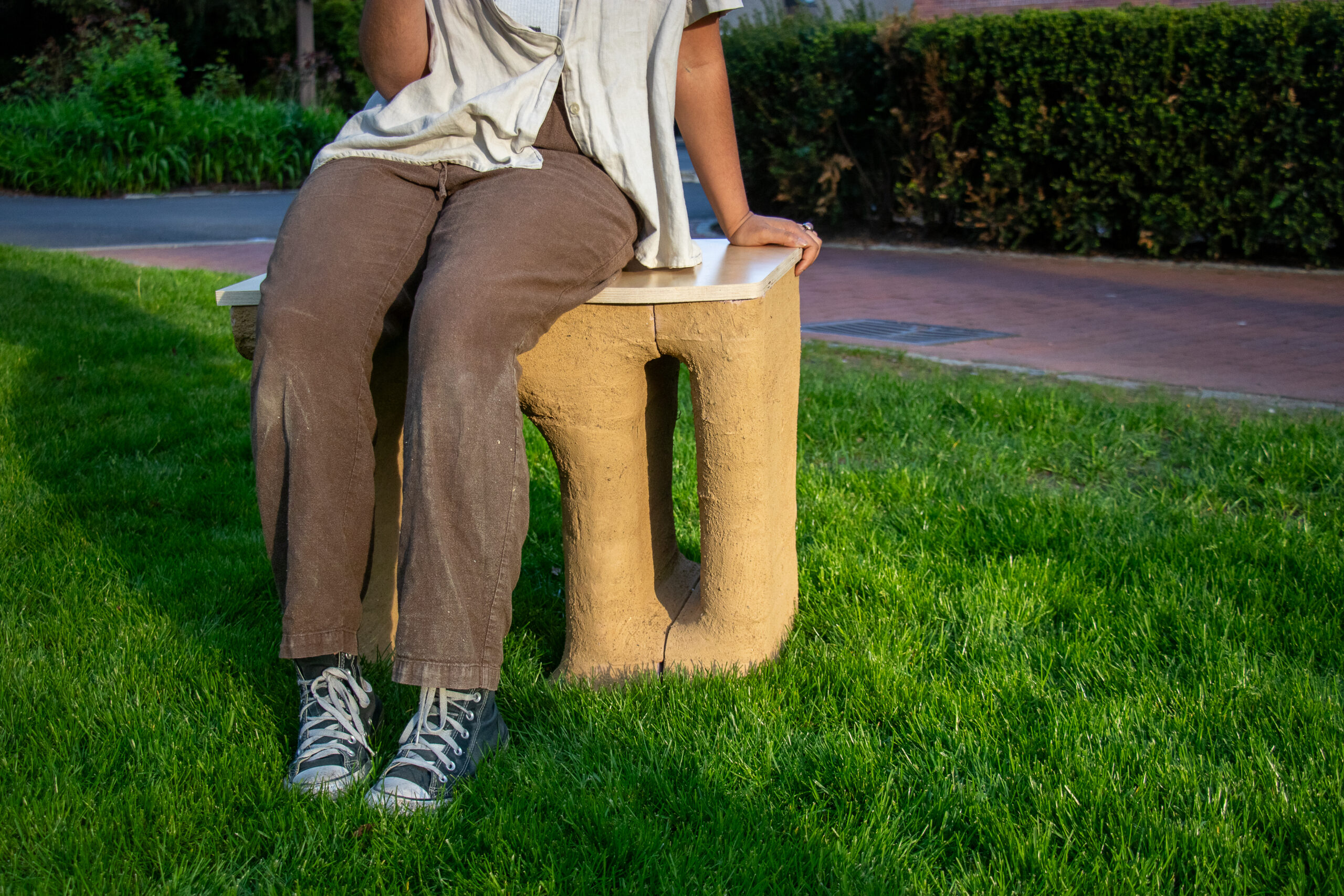
On a hot day, you could take a rest on the new, comfortable public benches that would be located all over the city. Designed by Theo Hall, BID ’24, M.U.D. Made Using Dirt is a modular seating unit constructed with raw earth to provide a natural, localized cooling effect and plenty of seating for the public to enjoy.
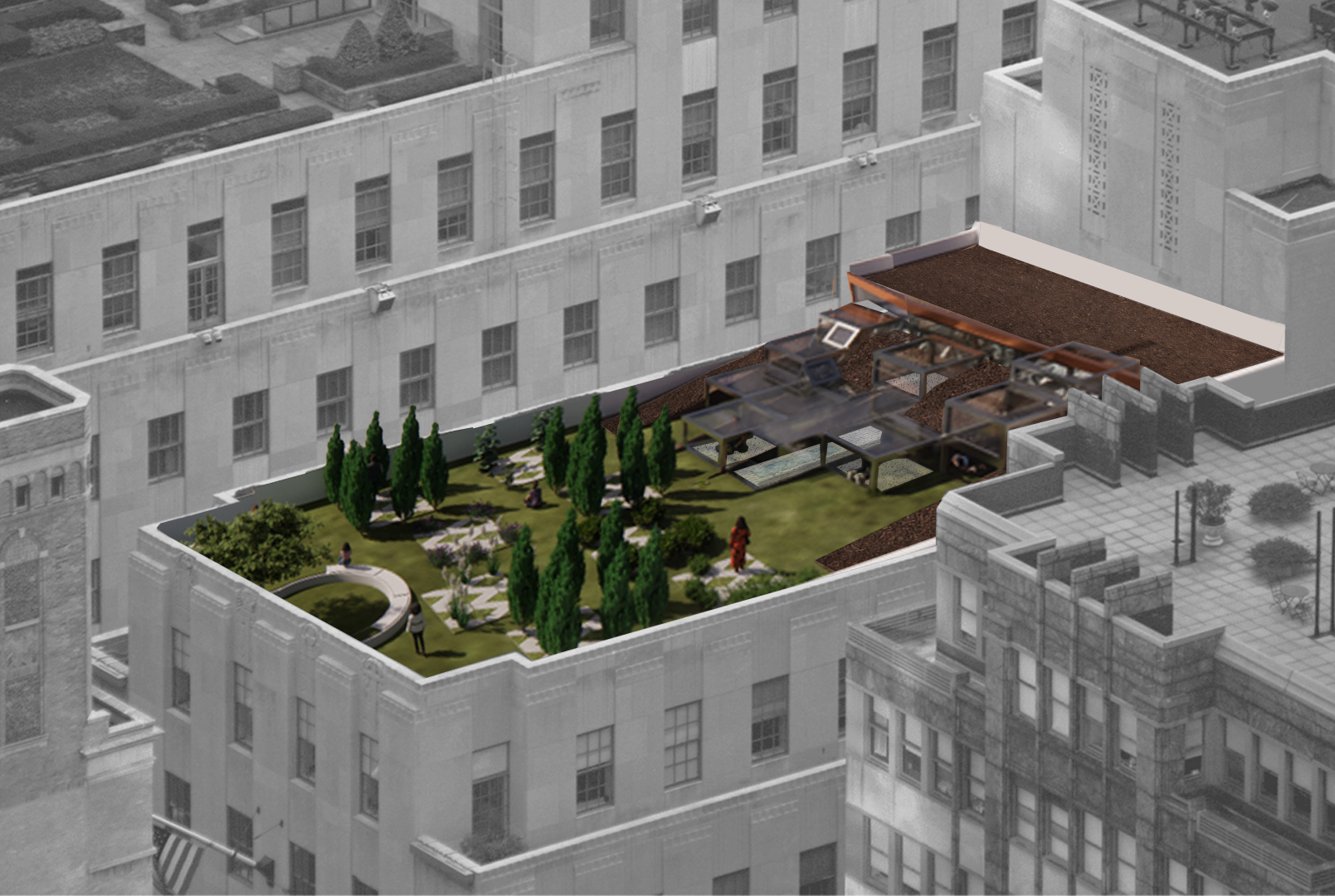
Away from the hustle and bustle of the city, visitors with lost loved ones would be able to take a quiet moment away to reflect at the Threshold of Grief, designed by Madeline Van Osten, BFA Interior Design ’24. A dedicated space within Rockefeller Center, the Threshold of Grief would offer a communal mourning place for people to pay their respects to those without gravesites.
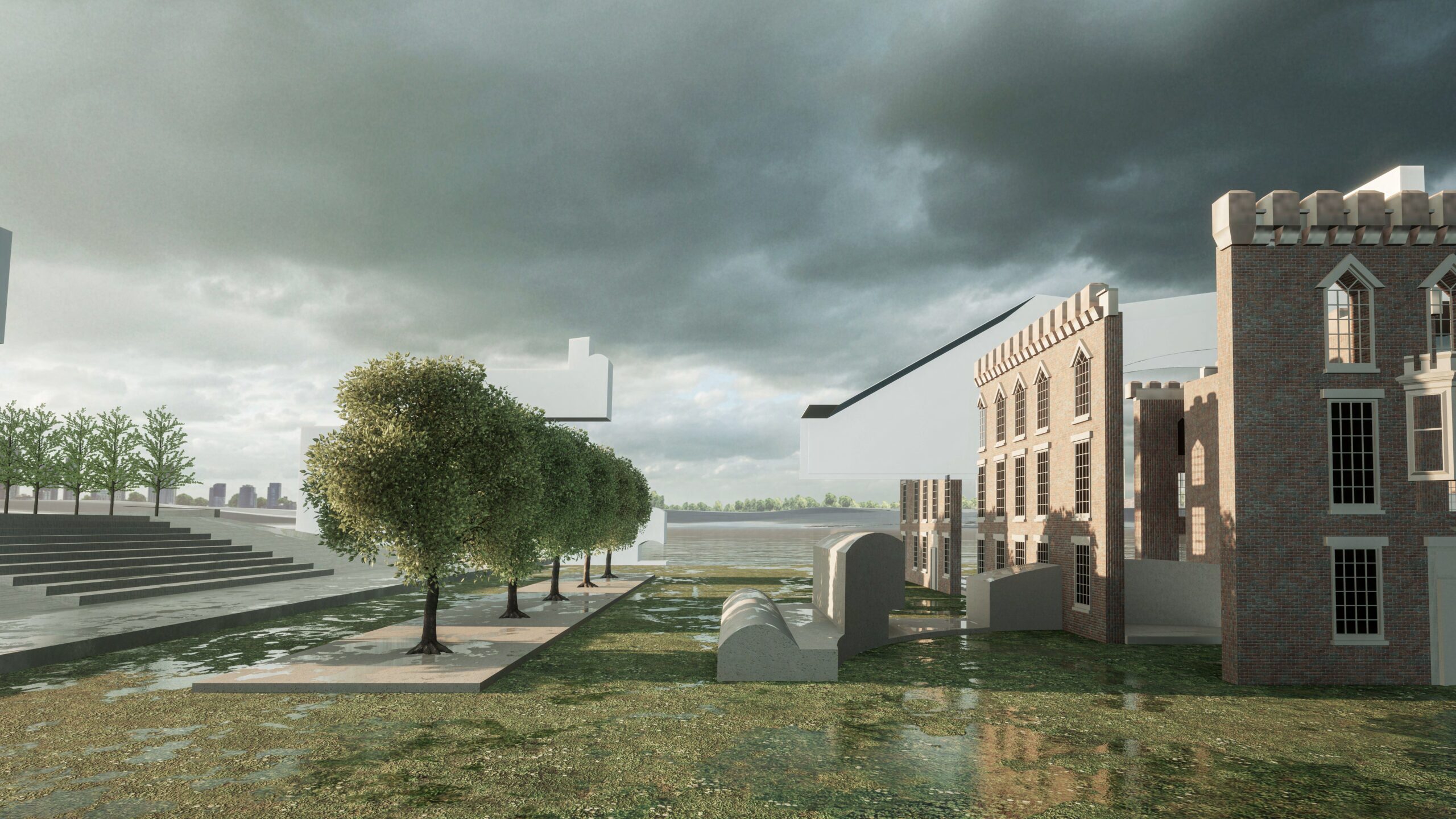
For a unique aural experience, you could hop over to Roosevelt Island, where urban noises would be metamorphosed into healing sounds thanks to Lines of Becoming by Lichen Wang, BFA Interior Design ’24. This therapeutic intervention would enhance mental well-being through unique acoustic experiences on Roosevelt Island.
Get Outside

If you were to find yourself in Washington Heights, you could head to Riverbank State Park to see the HS.C. Garden (HorseShoe Crab Garden) by Cesar Hidalgo, BID ’24. Advised and inspired by the Billion Oyster Project, this modular, floating garden and oyster cage housing system would improve juvenile oyster growth, harvesting, and tracking.
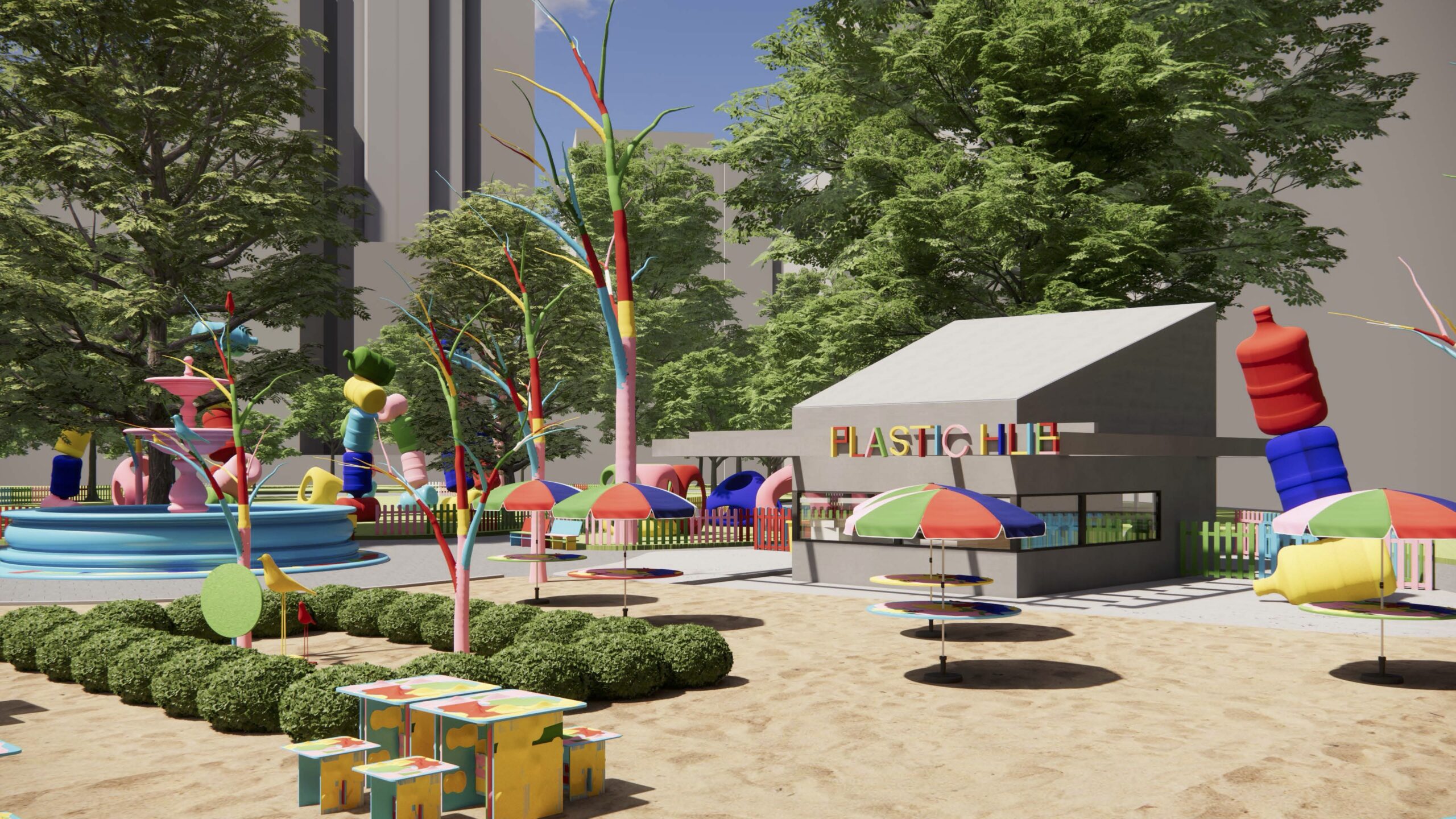
Over in the Flatiron district, Jiyeong Lee, BFA Interior Design ’24, has proposed a green innovation hub in Madison Square Park. The project, Plastic Cycling, would tackle the problem of plastic pollution by creating a centralized educational space and community hub for recycling, repurposing, and revaluing plastic waste.
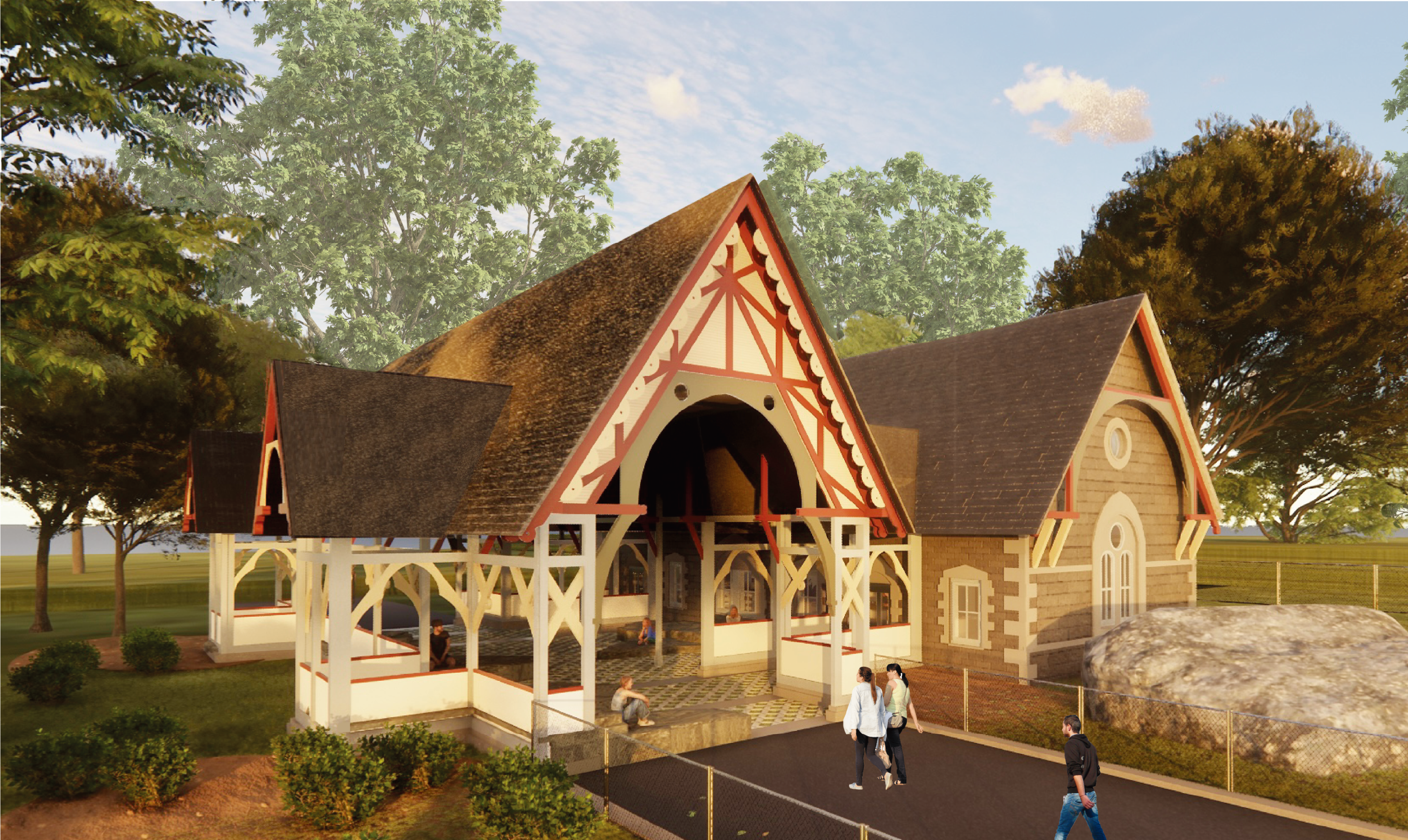
If you wanted to learn more about the indigenous rocks of NYC, you might visit the Central Park Geology Lab, a hands-on research and education center proposed by Hyeonsu Kim, BFA Interior Design ’24. With high-end microscopes and imaging systems, students could explore their local landscape and learn about their important role as stewards of the environment.
Go Shopping
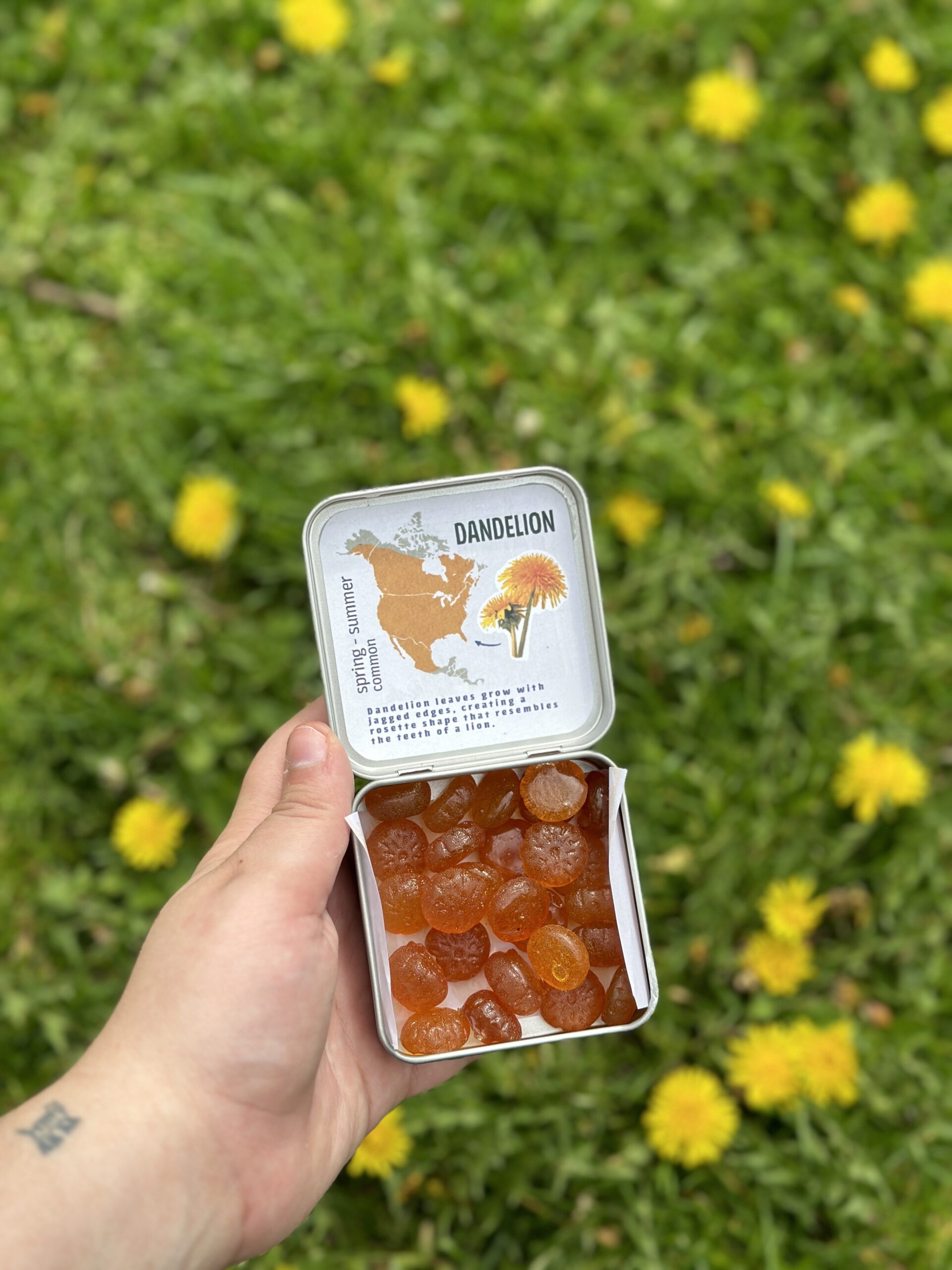
For a snack on the go, you could pick up a pack of Native Flavors by Elly Loiacono, BID ’24. These candies, flavored with local plants, would educate you about the flora in your area so that you could explore New York City, enjoy a sweet treat, and keep an eye out for the plants on the packaging along the way.

If you wanted to shop in Chinatown, you might pass through Extended Frontages, a pedestrian path structure designed by Corrine Guo, BArch ’24, and Xinyi Kong, BArch ’24. By cleverly connecting existing structures, they have imagined an appealing third space that would combine interior and exterior areas, and improve the flow of foot traffic.
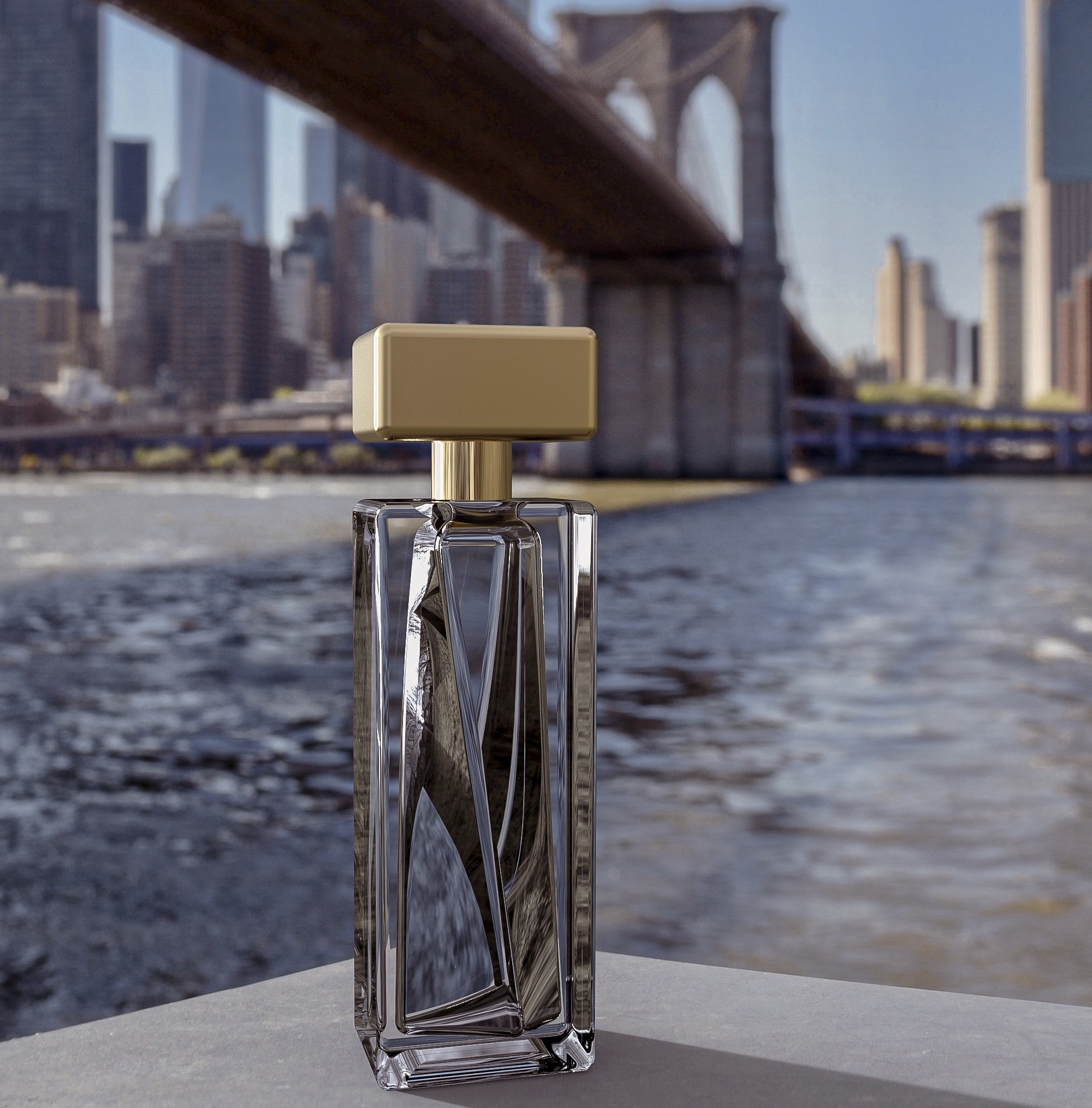
Remember your trip to NYC with a scent-based souvenir. Skyline Scents by Brynna Fisher, BID ’24, was imagined as a collection of perfumes that could evoke the vibrant landscapes and botanical elements within the city. Based on distinct Brooklyn destinations, the branding design, bottle packaging, and the physical scents of the perfumes were inspired by Pratt Institute, the Brooklyn Botanic Garden, and Emily Warren Roebling Plaza at Brooklyn Bridge Park.
Embedded in the heart of New York City, Pratt students have always found inspiration in their surroundings—problems to solve, products and spaces to create, and experiences to facilitate. With their projects, they continue to imagine and implement new and improved possibilities for the eight million people who call this city home.
